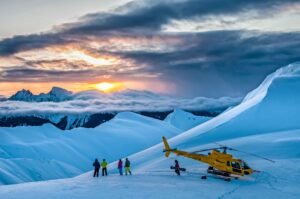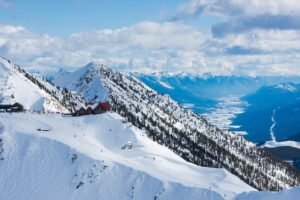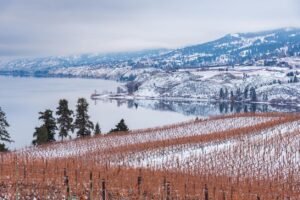Purcell Wilderness Conservancy Provincial Park and Protected Area, established in 1974, covers 131,500 hectares in British Columbia’s Purcell Mountains, an area known for its spiritual significance and as important habitat for wildlife, including grizzly bears. This park, created by local conservation efforts, features glaciated peaks, alpine lakes, and old-growth forests. It is a refuge for diverse wildlife and a paradise for outdoor enthusiasts. Discover the park’s rich natural beauty, ecological significance, and the recreational opportunities it offers.
Key Takeaways
-
The Purcell Wilderness Conservancy Provincial Park covers 131,500 hectares and offers a variety of landscapes and activities, reflecting the community’s dedication to preserving the natural beauty of the area.
-
The park is ecologically significant as one of the largest intact ecosystems in southeastern British Columbia, supporting diverse wildlife and endangered species while maintaining essential freshwater systems.
-
Efforts to protect the Purcell Wilderness include ongoing conservation activism, the establishment of the Qat’muk Indigenous Protected and Conserved Area, and community engagement in sustainable practices to ensure the area’s preservation.
Discovering the Purcell Wilderness Conservancy Provincial Park
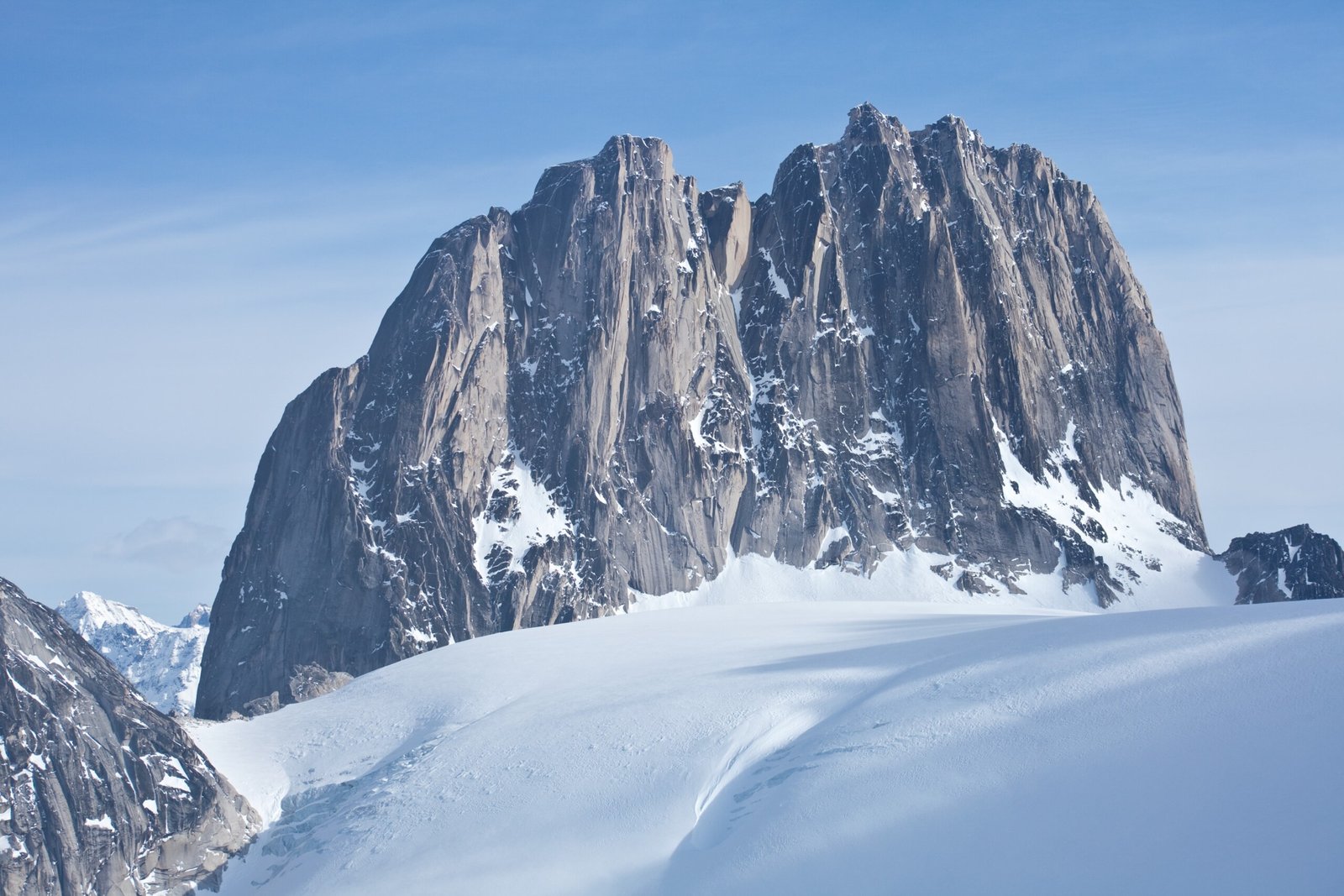
The Purcell Wilderness Conservancy Provincial Park, established in 1974, covers an impressive 131,500 hectares of British Columbia’s Purcell Mountains. This vast area was designated as a protected space following a successful local conservation effort, making it one of Canada’s first large-scale wilderness areas set aside due to citizen action. This early environmental victory highlights the community’s dedication to preserving the natural beauty and ecological integrity of the Purcell Mountains.
The park’s conservation history also includes opposition to a controversial ski resort and a year-round ski resort proposed in the Jumbo Valley, which were strongly opposed by local residents, conservationists, and the Ktunaxa Nation.
A testament to its ecological and recreational values, the park boasts diverse landscapes, including:
-
High glaciated mountains, perfect for a ski resort
-
Alpine lakes
-
Wetlands
-
Rushing rivers
These create a mosaic of habitats that support a rich variety of plant and animal life. These wild places offer endless opportunities for exploration and adventure, drawing visitors from all over the world.
With 70 named mountains, including the towering Mount Hamill, the park is a paradise for mountaineers and nature lovers alike. The park offers a variety of outdoor activities and stunning natural features, such as:
-
Rugged peaks
-
Ridgelines
-
Meadows
-
River valleys
-
Hot springs
Each visit promises a new discovery, whether it’s a hidden waterfall, a panoramic vista, or the simple joy of being surrounded by untouched wilderness.
Located deep within the Purcell Mountains, the park is a protected and conserved area that offers a sanctuary for many species and a respite for visitors seeking solace in nature. The federal and provincial governments have both played crucial roles in maintaining this pristine environment, ensuring that it remains a beacon of natural beauty for generations to come.
The Ecological Importance of the Purcell Mountains
Serving as a cornerstone of biodiversity conservation in southeastern British Columbia, the Purcell Mountains offer more than just a dramatic landscape. This region is considered the largest intact ecosystem in the area, largely due to its minimal human impact. The continuous expanse of wilderness plays a critical role in maintaining the biodiversity of the region, supporting a wide range of plant and animal species.
Streams and rivers originating from the Purcell Mountains feed into Kootenay Lake and the Columbia River, essential sources of freshwater for surrounding ecosystems. Protecting these waterways ensures the health of aquatic species like westslope cutthroat trout and bull trout, and maintains seasonal water-flow levels and water quality. These ecosystems have thrived for thousands of years, demonstrating the enduring ecological importance of the Purcell Mountains.
The central region of the Purcell Mountains encompasses mature and old-growth forests, extensive freshwater systems, and alpine habitats. These areas provide critical habitats for endangered species such as the whitebark pine and southern mountain caribou. Significant wildlife in these mountains includes grizzly bears, wolverines, mountain goats, northern goshawks, and peregrine falcons. By preserving these habitats, we ensure that the wild Purcell Mountains remain a sanctuary for these species.
Indigenous Heritage and Cultural Significance
Rooted in centuries of tradition and spiritual belief, the Ktunaxa Nation’s connection to the Purcell Wilderness runs deep. Qat’muk, a sacred place within the park, is revered as the home of the Grizzly Bear Spirit, Kⱡawⱡa Tukⱡuⱡakʔis. This spirit is a source of protection, guidance, and strength for the Ktunaxa people, embodying their profound relationship with the land and its creatures.
The Ktunaxa Nation strongly opposed developments like the Jumbo Glacier Resort, which threaten the sanctity of Qat’muk. The Jumbo Valley is not just a piece of land; it is a place of immense cultural and spiritual significance. The Ktunaxa believe they have a responsibility to protect Qat’muk and the Grizzly Bear Spirit, ensuring that this sacred place remains undisturbed for future generations.
This deep sense of stewardship reflects the broader cultural importance of the Purcell Wilderness to the Ktunaxa people. Their practices and beliefs underscore the need to respect and preserve these wild spaces, not just for their ecological value but for their cultural and spiritual heritage as well. The Ktunaxa’s dedication to protecting their sacred sites offers a powerful example of the interconnectedness of nature and culture.
Wildlife of the Purcell Wilderness Conservancy
Serving as a refuge for many species that thrive in its protected environment, the Purcell Wilderness Conservancy is a haven for wildlife. Among the diverse inhabitants are:
-
deer
-
moose
-
elk
-
mountain caribou
-
mountain goats
In fact, the park provides habitat for all ungulates of the Kootenay region except for bighorn sheep. This variety of large mammals is a testament to the park’s rich and varied ecosystems.
Grizzly and black bears are among the most iconic residents of the Purcell Wilderness. These majestic creatures roam the vast landscapes, embodying the wild and untamed spirit of the park. The presence of these apex predators is a key indicator of the health of the ecosystem, as they require large territories and diverse habitats to thrive.
Bird enthusiasts will find much to admire, with 90 bird species identified within the park. Additionally, the park’s streams and rivers support a variety of fish, including Dolly Varden, rainbow and cutthroat trout, and mountain whitefish. The abundance of wildlife in these wild places highlights the importance of maintaining the Purcell Wilderness as a protected and conserved area.
Recreational Opportunities in the Park
A plethora of recreational activities await those seeking adventure at the Purcell Wilderness Conservancy. The Earl Grey Pass Trail, which stretches up Hamill Creek and over a 2,256-metre pass, is a popular choice for hikers. This historic trail, once traversed by Earl Grey, provides not only a challenging hike but also a journey through time, offering cultural significance and breathtaking mountain views.
Wildlife viewing opportunities are abundant, with habitats ranging from old-growth forests to alpine lakes and verdant wetlands. Visitors can immerse themselves in the natural beauty of the park, witnessing the splendor of its diverse ecosystems and the creatures that call it home. Each season brings its own unique experiences, from springtime blooms to the serene snowscapes of winter.
On the east side of the conservancy, guide-outfitters have long offered sustainable hunting and sightseeing expeditions. These activities are conducted with respect for the environment, ensuring that the natural resources of the park are preserved. Whether you’re hiking, wildlife watching, or partaking in guided tours, the Purcell Wilderness offers something for every nature enthusiast.
Conservation Efforts and Challenges
A testament to the power of grassroots activism, the history of the Purcell Wilderness Conservancy is quite remarkable. In the 1970s, conservationists and outdoor clubs banded together to lobby for the protection of the Purcell Mountains. Their efforts paid off with the establishment of the Purcell Wilderness Conservancy, one of the first large-scale wilderness areas in Canada to be set aside due to local citizen action.
Throughout the 1980s, legal amendments were made to apply the Park Act and Regulations to the Conservancy, further solidifying its protected status. This legislative support was crucial in ensuring that the park remained a sanctuary for wildlife and a destination for nature lovers.
In 1995, the park was expanded and reclassified as a Class A provincial park in British Columbia. This classification provided the highest level of protection for the area, recognizing its ecological and recreational importance. However, the fight to protect the Purcell Wilderness is ongoing, with new challenges emerging as environmental threats evolve. Balancing conservation with human activity requires constant vigilance and community engagement.
The Jumbo Glacier Resort Project Controversy
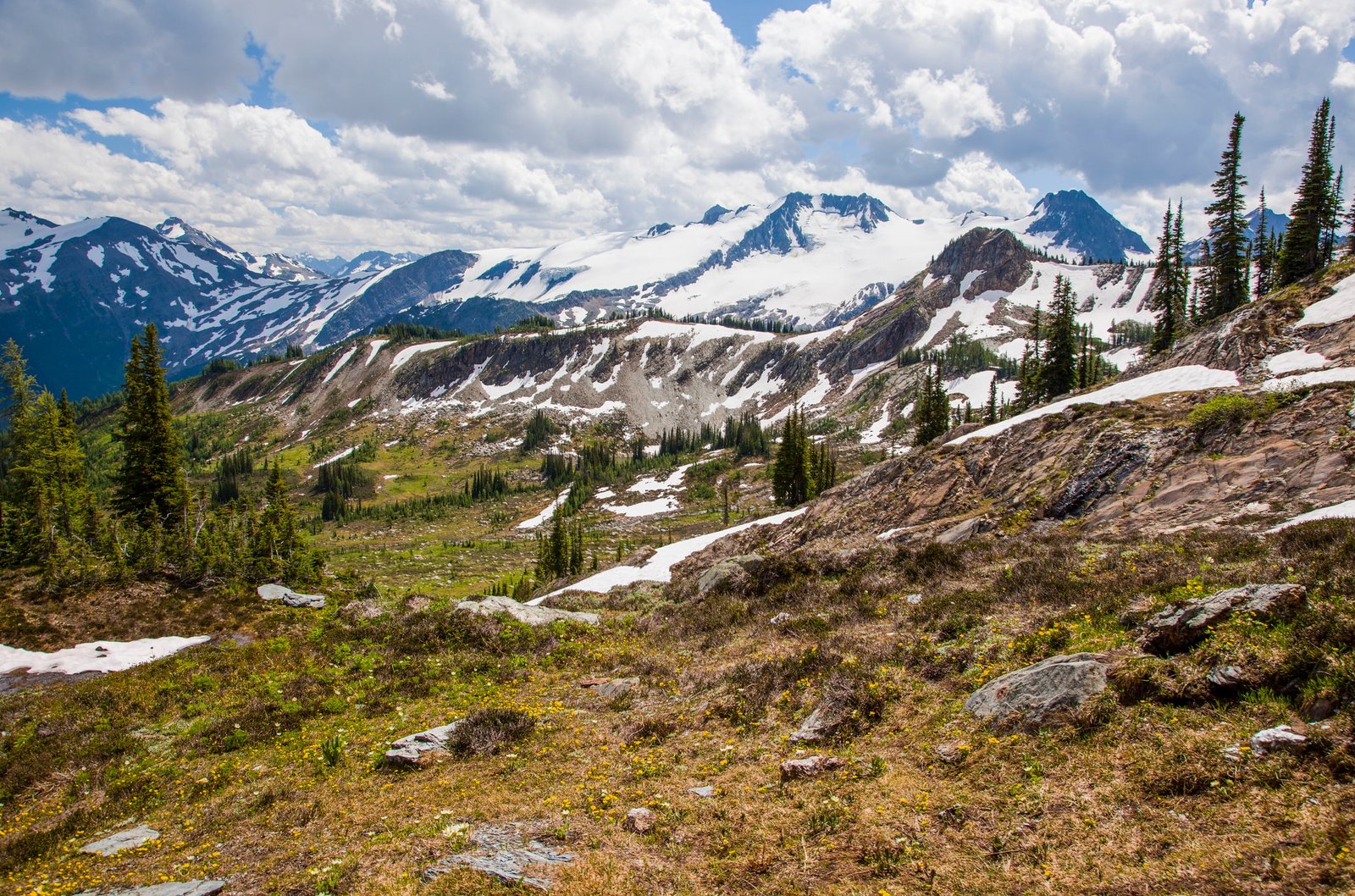
Since Glacier Resorts Ltd. first proposed the idea in 1991, the Jumbo Glacier Resort project has been steeped in controversy. Despite initial approval from the British Columbia Provincial Government in 1995, the project faced significant opposition. The environmental assessment process concluded in 2004 with an Environmental Certification, yet this did little to quell the concerns of local residents and environmental groups.
The proposal for a year-round ski resort in the heart of British Columbia’s Purcell Mountains threatened essential grizzly bear habitats, raising alarms among conservationists and the Ktunaxa Nation. Ninety percent of local residents in surrounding towns opposed the controversial ski resort, fearing the impact on their beloved wild spaces. Environmental NGOs like Wildsight and the Jumbo Creek Conservation Society joined the fight, gaining intervenor status in the Ktunaxa Nation v. British Columbia Court of Appeal case, all in the name of preserving the jumbo wild.
The Ktunaxa Nation’s legal battle to protect Qat’muk, their sacred place, has been arduous. Despite their appeals, the Supreme Court of BC dismissed their petition to stop the development of the resort. The federal court ruled that Freedom of Religion does not extend to the protection of the object of belief, a decision that has sparked ongoing debate.
In 2018, the Supreme Court of BC reissued Glacier Resorts Ltd.’s Environmental Certification, allowing development to proceed. This decision has kept the controversy alive, highlighting the complex interplay between development, conservation, and indigenous rights.
The Role of the Qat’muk Indigenous Protected and Conserved Area
The declaration of the Qat’muk Indigenous Protected and Conserved Area (IPCA) in January 2020 marked a landmark victory for indigenous conservation efforts. This 70,000-hectare area includes the entire Jumbo Valley and neighboring watersheds, preserving the cultural, biodiversity, and ecosystem values of the Ktunaxa Nation. The establishment of the Qat’muk IPCA marks a significant step towards recognizing and respecting indigenous stewardship.
Qat’muk holds profound cultural significance for the Ktunaxa people, believed to be the birthplace and healing ground of the Grizzly Bear Spirit. This spirit is central to their spiritual beliefs, providing guidance, strength, and protection. The Ktunaxa’s deep connection to Qat’muk underscores the importance of protecting this sacred place from external threats.
The creation of the Qat’muk IPCA involves mapping and assessing cultural and biodiversity values, negotiating conflicting land tenures, and developing a comprehensive stewardship plan. This initiative represents a move towards reconciliation, acknowledging the Ktunaxa Nation’s rights and their role in conserving these lands for future generations.
How You Can Help Preserve the Purcell Wilderness
Collective action from individuals, communities, and organizations is required to preserve the pristine beauty of the Purcell Wilderness. One impactful way to contribute is by supporting conservation organizations that actively lobby for the protection of the Purcell Wilderness. These groups play a crucial role in advocating for policies and actions that safeguard this vital ecosystem.
Participating in local clean-up and maintenance activities is another way to make a tangible difference. Community groups often organize events that help maintain the trails, remove litter, and preserve the natural beauty of the area. Engaging in these activities not only helps the environment but also fosters a sense of community and shared responsibility.
Some examples of local clean-up and maintenance activities include:
-
Trail clean-up days
-
Beach clean-ups
-
Park clean-ups
-
River or lake clean-ups
-
Tree planting events
By getting involved in these activities, you can contribute to the well-being of your community and the environment.
Sustainable tourism practices are essential when visiting the Purcell Wilderness. By minimizing human impact and respecting wildlife habitats, visitors can help ensure that this protected and conserved area remains undisturbed. Additionally, providing financial support through donations to conservation initiatives can significantly bolster ongoing protection efforts. Every contribution, no matter how small, aids in the collective mission to keep the Purcell Wilderness wild forever.
Summary
The Purcell Wilderness Conservancy Provincial Park and Protected Area is a treasure trove of natural beauty, ecological significance, and cultural heritage. From its establishment through community activism to its current status as a protected sanctuary, the park exemplifies the power of collective efforts in conservation. The rich biodiversity, profound indigenous heritage, and diverse recreational opportunities make it a unique and invaluable part of British Columbia’s natural landscape. By supporting conservation efforts and practicing sustainable tourism, we can all play a role in preserving this pristine wilderness for future generations.
Frequently Asked Questions
When was the Purcell Wilderness Conservancy Provincial Park established?
The Purcell Wilderness Conservancy Provincial Park was established in 1974 through a strong local conservation effort. It has since become a symbol of dedication to preserving the natural beauty of the area.
What are some key species found in the Purcell Wilderness Conservancy?
The Purcell Wilderness Conservancy is home to a diverse range of wildlife, such as grizzly and black bears, deer, moose, elk, mountain caribou, mountain goats, and over 90 bird species. It’s a rich and diverse ecosystem worth exploring!
Why is the Qat’muk area significant to the Ktunaxa Nation?
The Qat’muk area is significant to the Ktunaxa Nation because it is considered the home of the Grizzly Bear Spirit and holds deep cultural and spiritual significance for them. It is central to their spiritual beliefs.
What was the controversy surrounding the Jumbo Glacier Resort project?
The Jumbo Glacier Resort project faced controversy due to concerns about its impact on grizzly bear habitats and the cultural significance to the Ktunaxa Nation. Despite legal battles, the controversy surrounding the project persisted.
How can individuals help preserve the Purcell Wilderness?
You can help preserve the Purcell Wilderness by supporting conservation organizations, taking part in local clean-up efforts, practicing sustainable tourism, and making financial contributions to conservation initiatives. Together, we can make a difference in preserving this beautiful wilderness for future generations.

